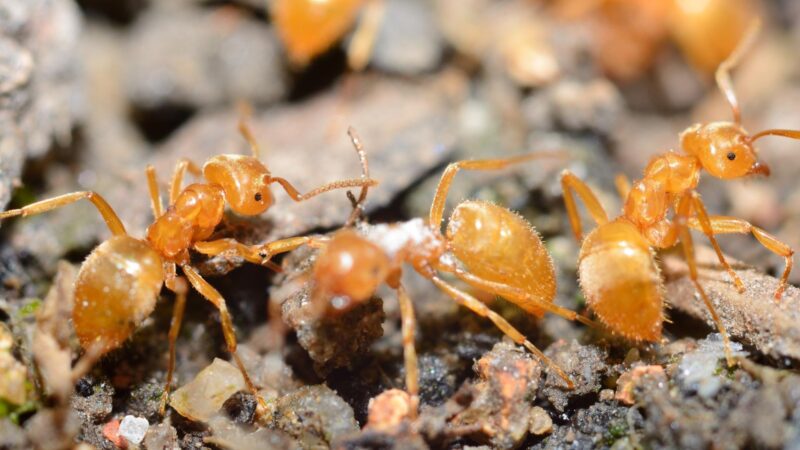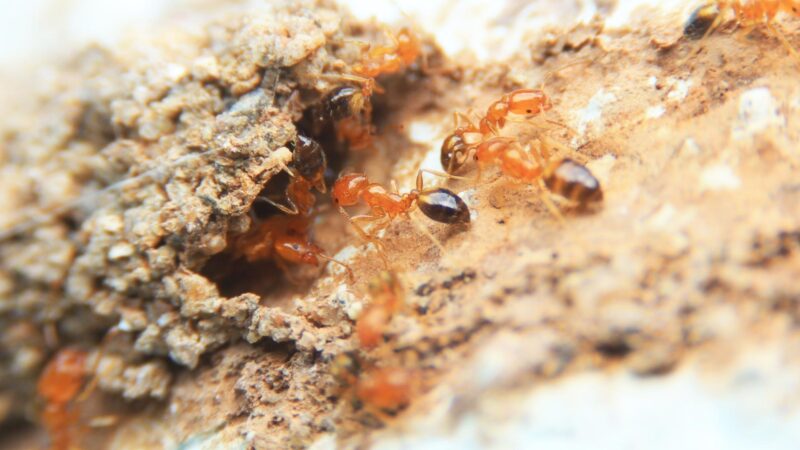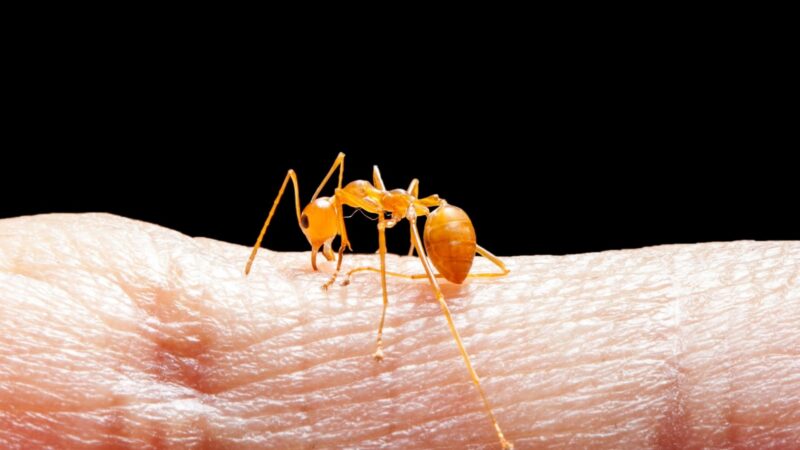Citronella ants can be seen swarming on a concrete floor or wall. When outdoors, they build their nests under a footing or moist soil. It’s easy to find them when you dig the soil.
The citronella ants with wings usually emerge from March or April until September or October. How would you know that you’ve found citronella ants?
What is a citronella ant? Citronella ant is an ant species that is known for the citronella or lemon verbena odor that it secretes when threatened. Its scent can also be detected when its body gets crushed, and you can correctly identify this species through it. This is a subterranean insect that has a yellow or brownish-yellow hue.
Citronella ants inhabit different parts of the United States. They can annoy you when they swarm inside your house through cracks and door openings.
Luckily, they’re not inclined to attack your food supply and furniture. To know whether you should worry or not about citronella ants, read on.
Table of Contents
Citronella Ant Identification

There’s not enough study and discovery about the life and habits of citronella ants. But experts were able to gather some interesting facts about them. These ants love honeydew so much.
They can get it from a bunch of underground aphids. Then, they harvest honeydew from these aphids that feed on saps. Underground aphids are known to stealthily damage plants through their roots, but citronella ants can stop it.
Citronella ants are sometimes mistaken for termites. If you look closely, they don’t have a wide waist which is common to termites. But they have the elbow joint on the antennae that you can usually see among ants.
Termites have the chain of beads on their antennae instead. The winged citronella ants are yellowish-brown, and the wingless workers have a darker color.
There’s a queen and sterile female workers inside the colony of citronella ants. Once it’s established, it can produce new kings and queens that can start colonies of their own.
They are called swarmers that were born in late summer and fall. It’s the time when you’ll likely see these ants. They venture to some places to mate and start their own colony.
After mating, the king dies. In the part of the queen, she finds the ideal place for building a colony and loses her wings to begin laying eggs.
It’s not in the nature of citronella ants to invade houses. Some of them got into your house or any building after a mating flight.
The swarmers were able to get indoors if they came with the roots that were delivered inside. They’re not completely considered nuisance pets as they only swarm inside without planning to stay for good.
You should know that these ants are not vulnerable to the usual ant bait. Chemical controls are also not effective in controlling them. You have to directly work on their nest to successfully eliminate them. There are some ways to prevent them from coming inside. Seal any cracks and openings that they can pass.
- Scientific Name: Acanthomyops interjectus
- Appearance: Has a scape and antennae with 12 segments; smoke-colored wings
- Color: Light yellow, amber, reddish-brown
- Lifespan: A few months
- Habitat: Under a footing or moist soil
- Size: 3 mm to 4.5 mm
- Diet: Honeydew of ground aphids
- Characteristics: The swarmers are twice as big as the workers; With sparse hairs on the abdomen, head, and thorax; Nocturnal; Agile, swift, and timid workers
What Are the Signs of Citronella Ants?

Citronella ants just accidentally enter a house or building. They may or may not establish a colony indoors, but they can make a temporary one during winter.
The temporary winter nest is usually found in the basement, specifically in a crack, board, or loose brick.
Despite the presence of citronella ants in your house, you don’t have to worry as they won’t touch anything.
But there’s only a little annoyance like a small pile of dirt outside the nest’s entrance. Some reports revealed that they leave their indoor nest in early spring for outdoor dwelling.
Do Citronella Ants Bite Humans?

Citronella ants don’t bite humans since they don’t sting. They only produce formic acid, which is their defense against other insects.
What Damage Do Citronella Ants Cause?

Citronella ants don’t cause structural damage apart from the annoyance that they bring. First and foremost, it’s not a good sight to see ants swarming around a room in your house.
Another thing that you won’t like is the small pile that they can leave outside the entrance of their temporary nest that they build indoors.
These ants are named after the scent that they discharge. You may think that it can disturb some people who don’t like the smell.
Just you know, the scent won’t be noticeable if it’s coming from a single ant. But the citronella scent will reach your nose once the whole colony is disturbed.
How Do You Prevent Citronella Ants?
You can use caulk like Gorilla Waterproof Caulk and Seal to cover any cracks and possible entry points. This is the simple way you can prevent citronella ants from entering your house, which can happen by accident.
How Do I Get Rid of Citronella Ants?
The usual ant bait is not effective on citronella ants. If you’re thinking of getting rid of them, you have to know that the swarming typically lasts for three to four days.
Hence, you can just use the vacuum to put them in a bag before disposal. You may just sweep them without using chemicals.
When these ants are a nuisance outside, you have to deal with the whole colony. Dilute insecticide and drench their nest with the mixture. You can use Ortho Home Defense Insect Killer and Terro Ant and Termite Killer as they’re proven to be effective in eliminating pests.
You can just let the citronella ants forage outdoors as long as they don’t bother you and your things. In some cases, these ants may reside in slabs and crawl spaces, and it’s the time that you need to hire a pest control professional.
Frequently Asked Questions
Why Do I Have Citronella Ants?
Most reports of swarming citronella ants stated that they are commonly found on concrete slabs and below the porches. They can enter your house or other buildings unintentionally, like when they are in a mating fight.
As mentioned, these ants collect aphids and get honeydew from them. Thus, it sometimes happens that they are transported into the house through the plant’s roots.
Why Do Citronella Ants Smell?
Although citronella ants don’t have a sting, they produce formic acid, which they utilize to defend themselves from other insects.
They also release citronella content to help the formic acid permeate through the body of their contender. That’s why the citrus smell can be detected when many of them feel threatened as they use it as a weapon.
Where Can You Find Citronella Ants?
In an open area, you’ll find citronella ants in small hills of soil. They’re also under porches, patio blocks, concrete patios, logs, and rocks. It’s their habit to make a mound of soil when they leave their galleries.
When winter comes, the swarmers, together with the colony, will travel through the gaps and cracks of a building.
Once they’re inside a house or building, they build a temporary nest. The places that they may choose are cracks on the floor or wall and below the loose board and brick in the basement.
Do Citronella Ants Fly?
Citronella ants fly because some males and females have wings, and they’re called swarmers. They’re produced by a well-established colony, and they will leave at the right time to mate and create their own.
Summary
Citronella ants can be posh with their lemony scent, but this article tells you that it’s their defense mechanism. This can’t sting or affect humans as it’s only viable on other insects.
Their scent is amazing, and once you detect it, there’s no doubt that these citronella ants feel threatened! You shouldn’t mind them as they’re not damaging pests as they only feed on honeydew from ground aphids.